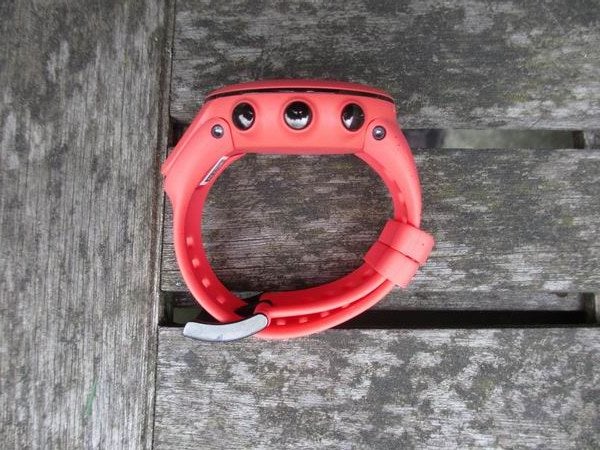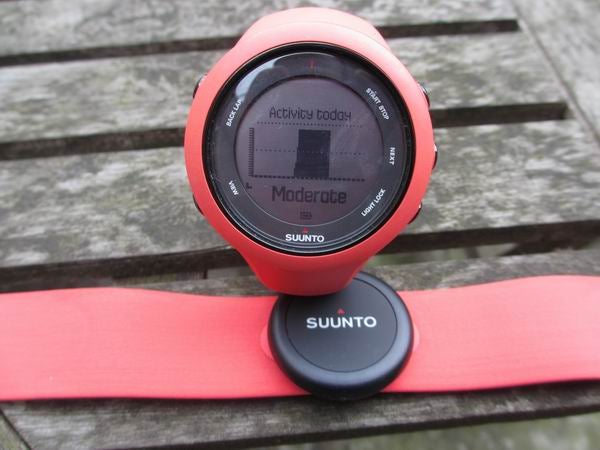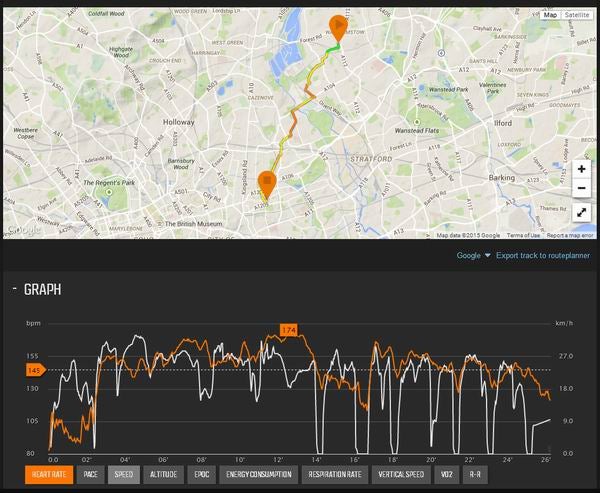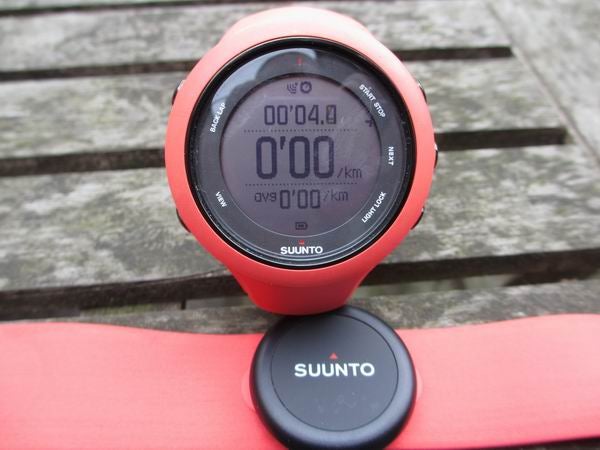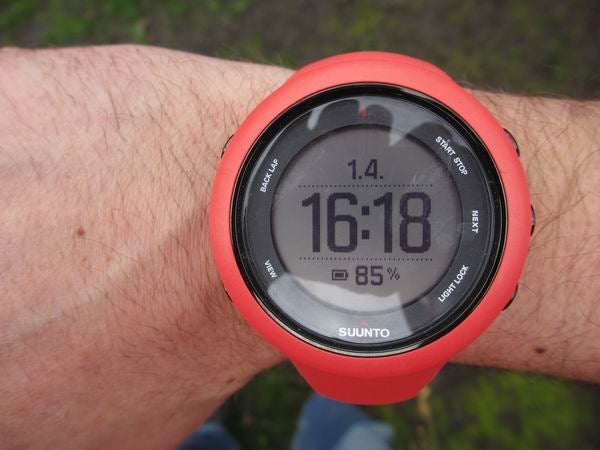Suunto Ambit3 Sport Review
Suunto Ambit3 Sport
Multi-sport smarts plus general activity tracking, but not great at all disciplines
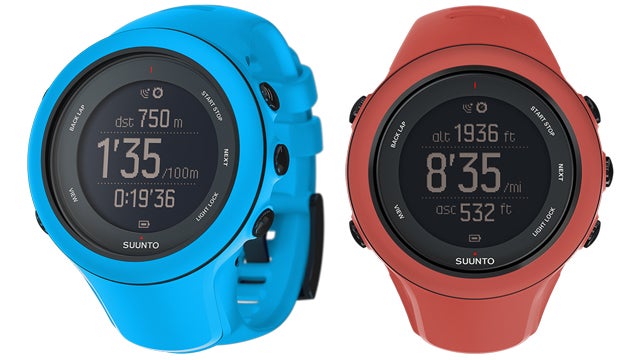
Verdict
Pros
- Tracks GPS, heartrate and daily fitness
- Tracks heartrate while swimming
- Multi-sport and navigation features
Cons
- Very bulky/uncomfortable on wrist
- Daily fitness summary very limited
- Pricey compared with new rivals
Key Specifications
- Review Price: £325.00
- Daily activity fitness tracker
- GPS activity tracking
- Wireless heartrate monitoring including while swimming
- Multisport support including transition times
- 10 hour minimum battery, 14 day for fitness tracking only
- 50m water resistant
- 80g weight, 15.5mm thick x 50mm diameter body
- Bluetooth Smart foot pod and cycling sensor support
What is the Suunto Ambit 3?
The Suunto Ambit 3 Sport is the
middle of three new Suunto sports watches that offer GPS, heart rate and
general activity tracking simultaneously.
These watches are
powerful, highly configurable and, unlike most on the market, can track
your heart rate not just out on the trails, but in the pool too.
However, all that functionality comes with two rather painful costs –
price and bulk.
SEE ALSO: 8 Best Smartwatches Right Now
Suunto Ambit 3 – Design and screen
The
most obvious thing about the Suunto Ambit 3’s design is its size on the
wrist. It stands 15.5mm proud and weighs 80g. The result is, compared
to even most GPS watch rivals, problematic.
On my large wrist the
GPS module, which extends from the bottom of the watch face, tended to
dig in against my bone. On thinner wrists, the watch’s size meant it was
difficult to get it to sit still comfortably. And it looked ludicrous.
Five
buttons surround the face – start/stop, next, light/lock, view and
back/lap. Several tended to get pressed in too easily – on a gentle run
even. So the ‘lock’ option comes in handy.
On the back are four
small recessed metal dots for the non-standard USB cable to clamp into.
Which does mean carrying yet another cable on tour compared to a
standard socket.
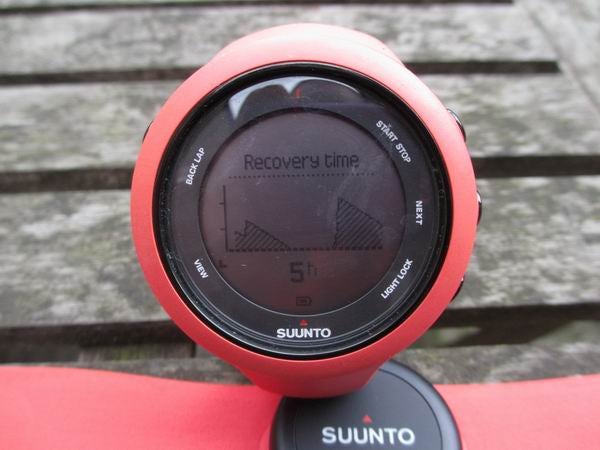
The
screen is a simple 128×128 affair, taking up 29mm diameter – but not
all of that is used. The circular design means there’s some dead space
to the display. The screen is also well-recessed into the watch –
meaning it should get fewer knocks.
The display itself is, like the Polar M400, basic in approach – but does include some nice graph options. And it’s bright enough to be fairly readable in sunlight.
Suunto Ambit 3 – Features
The
Ambit 3 comes in three flavours. The lower-priced Ambit 3 Run drops
swimming heart rate and cycling power support and you can’t change
sports while exercising. The top-of-the-range Ambit 3 Peak doubles
water-resistance and battery life and adds in an air pressure sensor for
better altimeter, temperature and barometer.
The Ambit 3 Sport,
tested here, sits in the middle – combining multi-sport GPS, heart rate
and other sensor support to a decent extent with 24/7 activity tracking.
Unfortunately, that general activity tracking is basic to say the
least. All three models of the Ambit 3 and their associated MovesCount
site and app will not, for instance, kick out daily steps. That could
improve with an update.
For now though, all you get is an overall
rating (e.g. “moderate” or “vigorous”), calorie count, and chart
showing your activity level versus previous days. The Ambit 3 also won’t
currently track your sleep – which is handy seeing as it’s
uncomfortable enough you won’t want to wear it at night if you can help
it.
Fortunately, the Ambit 3 scores far better on actual exercise
and sport than sleep and general movement. Simply hit the start button,
choose your exercise from a list and go. The type of exercise you
choose will set how accurate the GPS sampling rate is (and therefore how
quickly the battery drains), whether the GPS and heart rate are enabled
at all, how laps are set up and more. You can create or modify and
store up to 10 sports in the watch at any time – also setting what data
you’re shown during an activity.
SEE ALSO: Best Fitness and Acitivity Trackers 2015
GPS is done via the rather bulky
nub below the face of the watch, heart rate is measured wirelessly from
a Bluetooth Smart chest strap. And it makes real sense to use Suunto’s
own Smart Sensor that comes as an optional bundle with the Ambit 3. This
is the only strap that will do in-water heart rate with the watch.
Bluetooth doesn’t work through water – so the Smart Sensor stores heart
rate data while you’re swimming. And then syncs the data to the Ambit 3
when you get out. That means no on-screen heart rate while swimming
also.
Of course, the alternative would be to use an optical heart rate monitor, built into the watch – like the TomTom Runner Cardio
does. So far, few higher-end sports watches have gone for optical
sensors – they’ve mostly been used to test resting rate due to accuracy
concerns.
As well as swimming heart rate, the Ambit 3 scores
significantly in its approach to multi-sport events and broader outdoors
use. Turn-by-turn waypoint navigation is available, including while
tracking a sport/activity, as is a digital compass.
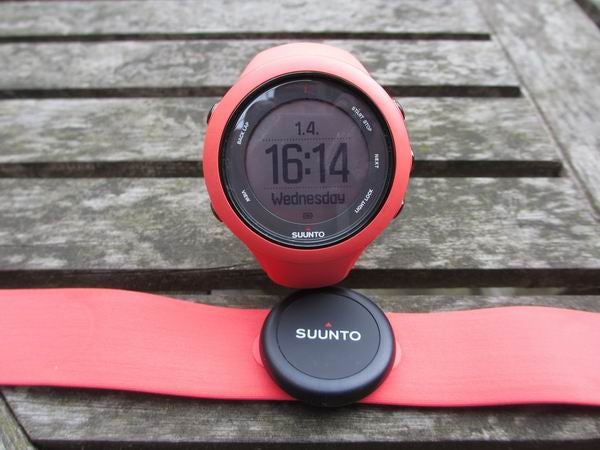
More
importantly for multi-sport users, you can switch sport mid-exercise
with only a couple of button presses – or even better, pre-set sport
order and transition periods and do it with only one press per change.
For a triathlon, you set up swim, transition, bike, transition, run. One
button press per change sees the whole event tracked. The Ambit 3 will
also track pool and open water swims differently – using accelerometer
data and preset length to judge pool laps automatically, while using GPS
in open water.
There’s also the option of setting up interval
workouts with alarms – so you can jog for a warmup, sprint at a certain
minimum pace or heart-rate zone for a specified time or distance, then
recover, go again, cool down etc. This is only doable via app currently
(website option coming soon, according to Suunto).
On top of that
already long list of features, there’s support for other Bluetooth
Smart sensors beyond heart rate. This includes foot pods, although the
Ambit 3 uses wrist movement to cover cadence already and wireless bike
speed, power and cadence sensor support too.
Tested alongside
common Bluetooth Smart products, such as a Polar heart rate belt and
Adidas foot pod, all seemed fine. But be warned, there are complaints
online of patchy functionality between the Ambit 3 and more esoteric
Bluetooth Smart sensors.
You can also connect the Ambit 3 to
phone via Bluetooth for data sync, but also to get notifications
on-screen. Apple Watch users may smile at the basic data available – but
if you want an icon when you get a Twitter mention or email, you can
have it.
Suunto Ambit 3 – App
Suunto, like its arch rivals Polar and
Garmin, need to look at what fitness band manufacturers such as Fitbit
are doing with apps and social connections. By comparison, the outdoor
activity specialists’ apps are very basic.
MovesCount – the
Suunto app – basically replicates the desktop MovesCount website, with
the only addition the ability to program interval workouts. The app is
also currently iPhone-only. Android support is promised imminently, from
4.3 onwards – so most Android phone owners will be able to use the
app.
As for the app and desktop site itself, it allows you to
track and analyse “Moves” (activities) in serious detail. Maps,
heart-rate charts and zones and training effect are all there. Plus
calories, VO2, recovery time and other more esoteric data.
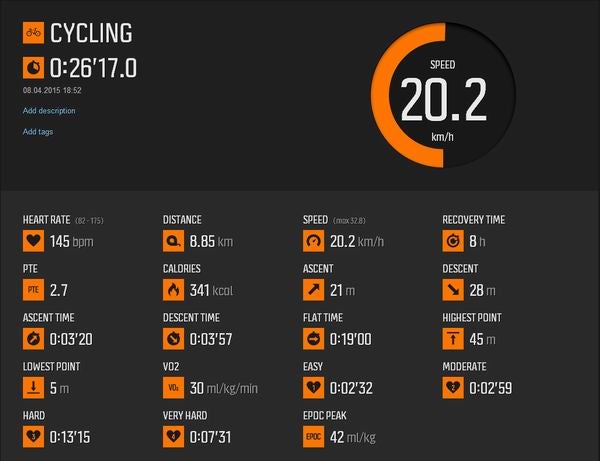
What’s
missing is the general fitness information – steps per day, and any
goal to work towards. But also there’s not much over-time tracking of
value, or encouragement to social interaction.
You can see other
MovesCount members in your area, see their “Moves” and join shared
interest groups. But there’s little community spirit or friendly
competition. As an example, there is currently no Birmingham group and
even London’s biggest group features a rather unlucky 13 people. As an
event, the London Marathon manages a mere 15.
At least an
automatic sync to Strava is one option you can easily set up. And for
other fitness communities, multiple export formats including GPX and TCX
are available.
One app element does work to Suunto’s credit
though – it has opened up its watches to third party developers. A
growing range of apps can be downloaded via Suunto and installed into
the Ambit 3 – to, for instance, display your heart rate as a percentage
of max or give your estimated remaining time to 10k.
Suunto Ambit 3 – Setup
Setting
up and operating the Ambit 3 is easy. There’s a fairly simple sign-in
procedure on the watch, with more data inputtable on app or website, to
generate your heart-rate zones. Then you’re away.
Until you want
to get into the more complex issues of interval workouts, custom
exercise and display types, that is. Although even here the desktop
software, while perhaps not as well designed or as clear as some, is
fairly simple to wade into and get modifying.
In the same vein, belt setup and pairing with other sensors works without hitch. And menus on the watch are simple and clear.
Suunto Ambit 3 – Performance
As
you might expect with Suunto’s long heritage in GPS and heart rate
monitoring, everything worked well. The GPS was slightly slower to get a
fix than the Polar M400 – but only by a few seconds. Meanwhile, the heart rate belt seemed to get a fix quicker and more reliably.
There
have been online complaints about the heart rate strap shifting during
swimming turns in races, but try as I might, I couldn’t get this to
happen. The solution could be to push off a bit less hard, wear a tri
top or just cinch the belt in harder.
In water, the GPS
performance was far less accurate – but that’s due to GPS signals not
working well underwater. Diving obviously won’t work at all for GPS.
Generally,
performance was excellent. The real problem for the Ambit 3 wasn’t its
ability, but its size and shape. The Ambit 3 is so bulky that as a
fitness band it’s a failure – it simply wasn’t forgettable when worn
constantly.
SEE ALSO: Best Android Apps – Nike Plus Running
Suunto Ambit 3 – Battery life
The
Ambit 3 is rated as having a 14 day general use battery life, or 15
hour battery life with five second GPS fix intervals. This squares up
well to the real-world testing.
The watch didn’t require
recharging across multiple days with heavy sports use in – such as three
days with a run, row and two bike rides in totalling three hours of
activity.
Should I buy the Suunto Ambit 3?
If
you’re a multi-sport maniac, then arguably yes. If you want to combine
more accurate tracking of your sporty activities with a general fitness
band, no.
For the latter job, wearing the Ambit 3 constantly
quickly gets annoying and tiring. And the general activity data
available is currently far too poor. For this kind of approach, the Polar M400 scores far better.
However,
for tracking multiple sports – particularly if any of them are
water-based – the Ambit 3 could be a good purchase. It is good value for
the feature list and performs well.
However, the Polar V800 is a
fairly similar price, with similar swimming and multi-sport support and
succeeds on the general activity tracking front where the Ambit 3
fails. Plus it’s slimmer and less obtrusive. For those reasons it may
prove a better purchase.
SEE ALSO: Which Running Headphones Should You Buy?
Verdict
Good multi-sport GPS and
heart-rate monitoring sports watch. But for general activity
tracking, rival fitness bands and sports watches do better.

